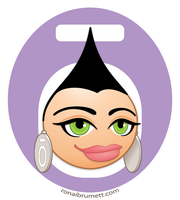Create Real
Change for
You and
Your Family
Do You Feel Like You Are Fighting the Same Emotional Issues Again and Again??
Most people don't know how to feel and release emotions. Instead we push them down, ignore them, or deal with them in unhealthy ways.
And it's not just us!! Previous generations didn't know how to deal with emotions any more than we do (and perhaps less!).
Emotions can accumulate and even be passed down from one generation to another.
What do stuck emotions look like??
Self-sabotaging behaviors
Recurring emotional states like anxiety, depression, anger, etc.
Stress and Overwhelm on a regular basis
Easily irritated or emotional
Feeling scattered, difficulty focuses
Struggle to reach your goals

Emotion Code identifies stuck emotions in the body and helps you to release them for good.

Emotion Code helps us clear emotional "clutter", helping us to feel more relaxed, clear-headed, and emotionally balanced.
Some people even experience better daily health. Reduced headaches, less tension in the body, improved digestion, and sleep - all from clearing stuck emotions in the body.
Are you ready to get back in the DRIVERS seat of your life???
What Is Emotion Code??
Created by Dr. Bradley Nelson (D.C., ret) after more than 20 years as a holistic chiropractor and teacher, The Emotion Code is designed to help you alleviate physical discomfort, ease emotional wounds, and restore love to relationships. It could even help you break through potential self-sabotage to live the life you were meant to live.
Harboring possible Trapped Emotions within your body may greatly affect your overall physical and emotional wellbeing. However, thanks to Dr. Bradley Nelson’s work and publications in the field of energy work and muscle testing, you can discover just how beneficial it can be to easily release trapped emotions with the help of The Emotion Code® Chart.
Testimonial
‘I have been familiar with the emotion code for just over a year and had done some releasing for myself when I began working with Ronai. Within the first session I was blown away. She was so efficient and caring as we dove deep into my release and healing.
Each session she knows exactly where to start, making it easy to keep the work flowing. I love how Ronai supports me in creating affirmations and essential oil combinations to support my emotion code releases. I cannot recommend this enough, we are bogged down with stuck emotions and this work is truly freeing.’ ~Jennifer S., California, USA
Are you ready to get back in the DRIVERS seat of your life???
How Does Emotion Code Work??
A 4-STEP PROCESS
Generally speaking, releasing Trapped Emotions is a four-step muscle testing process that’s designed to prepare yourself, or the person you’re working with, to determine if an emotion is trapped, determine which emotion it is, and then release the identified emotion.
USING THE EMOTION CODE CHART
At first glance, The Emotion Code Chart may look complex, but by spending just a few minutes understanding how it works, you’ll find it’s a key component in potentially finding and releasing Trapped Emotions. After verifying with yourself or your test subject that you are ready to either test or be
muscle-tested, it’s time to start asking questions in order to dial in on any potential Trapped Emotions.
The Emotion Code Chart consists of 60 emotions, divided into two columns and six rows. To begin zeroing in on an emotion, ask yourself or your subject, “is this Trapped Emotion in Column A?” Perform the muscle test and, if the muscle being tested weakens, we believe this is a “no” answer. In that case, ask if the Trapped Emotion is in Column B. In the event you receive a double positive or double negative, we recommend you take a breath, reset, and repeat the questions until you get a definitive answer. Notice that once you have determined which column the Trapped Emotion is in, you will have cut the list in half!
Once you know which column the trapped emotion is in, determining the specific row can help you further pinpoint this particular piece of emotional baggage. Notice that each column consists of six rows. The fastest way to find the Trapped Emotion is to ask, “is this Trapped Emotion in one of the odd rows?” If the answer to this question is “yes,” you have narrowed the list down to the emotions in the odd rows in this column. If the answer is “no,” you will have narrowed the list to the emotions in the even rows in this column. I think you have the idea. If you’ve discovered that the Trapped Emotion is in one of the odd rows in this particular column, the next question would be, “is this Trapped Emotion in row one?” If the answer is negative, ask if the Trapped Emotion is in row 3, then row 5, until you get an affirmative answer. Follow this method until you receive a clear answer of which column and row the Trapped Emotion is in.
For example, if your body responds positively to Column A, Row 3, you will have narrowed your search to just five emotions: crying, discouragement, rejection, sadness or sorrow. At this point, proper procedure would be to test the emotions one by one, asking, “is the Trapped Emotion crying?” followed by a muscle test. Keep in mind that you’re only looking for one emotion on the list at any given time. One of these emotions will test stronger than the others, indicating the Trapped Emotion that you’re looking for. If all of the emotions test weak or “no,” we believe you have uncovered an “inherited” Trapped Emotion, or an emotion that was passed to you from your biological mother or father. You can then use a slightly deeper process to determine where and when the Trapped Emotion originated.
To learn more about how to release potential trapped emotions from yourself and others, visit
To download a copy of The Emotion Code book, as well as the book on audio.
Learn more about becoming an Emotion Code and/or Body Code Practitioner
.

Copyright ©2024 - Ronai Brumett
